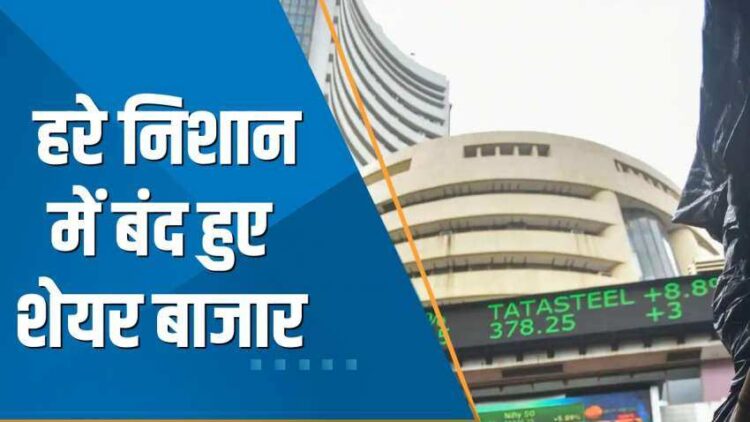The Indian stock markets closed at a flat level in the first trading session of June on Monday (June 2) amid a mixed trend with Asian markets. During the trading, the major benchmark index Nifty-50 and Sensex declined by 1–1 percent. However, the market supported the second part of the business and at the bottom levels in the last 10 minutes, especially in the last 10 minutes.
Metal stocks declined due to US President Donald Trump’s announcement to increase the tariff on steel imports from 25% to 50%. This also affected IT stocks and the expectations generated from strong GDP figures were also tarnished. The 30 -share BSE Sensex today opened with more than 200 points at 81,214. During the trading, it fell by more than 800 points to a low of 80,654.26 points. Finally it closed at 81,373.75 with a slight decline of 77.26 points or 0.09%.
The benchmark index Sensex and Nifty are likely to be affected by several factors on the first trading day of the month i.e. Monday, June 2, 2025. This includes the fourth quarter GDP data, Trump Steel Tariff, the final US for May and the Indian Manufacturing PMI data, foreign investors (FIIs) and global markets.
Earlier, the Indian stock market closed down on Friday (May 30) in the last trading session of the week. Thirty -share BSE Sensex closed down 82.01 points or 0.22% to close at 81,451.01. Similarly, the National Stock Exchange (NSE )’s Nifty-50 was down by 82.90 points or 0.33% to close at 24,750.70.
GDP hike in March quarter was 7.4%
According to data released on Friday by the National Statistics Office (NSO), India’s actual GDP (GDP) increased by 7.4 percent in the fourth quarter (Q4) of FY 2024-25 (FY25). The fourth quarter figure was more than an estimate of the Reserve Bank of India (RBI) 7.2 percent increase. This reflects faster speed than expected in the economy. However, the full year GDP growth for FY 2025 was 6.5 percent, slightly lower than RBI’s 6.6 percent estimate. Moving forward, RBI has estimated a 6.5 percent GDP increase for the current financial year (FY26).
What is going on in global markets?
A mixed trend was seen in the Asian markets after US President Donald Trump announced a huge increase in tariffs on steel imports. Talking to Steelworkers at US Steel’s Irwin Works facility at West Miflin, Pennsylvania late Friday evening, Trump said that he would increase the tariff on steel imports from 25 percent to 50 percent from Wednesday. He said that the move aims to further strengthen the American steel industry. The President also confirmed the date of the beginning of June 4 for the new tariff in a post on Truth Social.
In response, Nikkei declined by 1.21 percent. While the broad subject index declined by 0.83 percent. ASX200 declined by 0.1 percent. On the other hand, Kospi broke this trend and registered a gain of 0.3 percent. The markets of China, Malaysia and New Zealand remained closed due to public holidays. The US share futures decreased before the first trading session of June. Both S&P 500 and Nasdaq-100 futures fell by 0.3 percent. While Dow Jones futures also fell by 0.3 percent. There was a mixed session at Wall Street on Friday. There was almost no change in S&P 500, it declined by only 0.01 percent. Nasdaq fell by 0.32 percent, while Dow Jones gained 0.13 percent.










